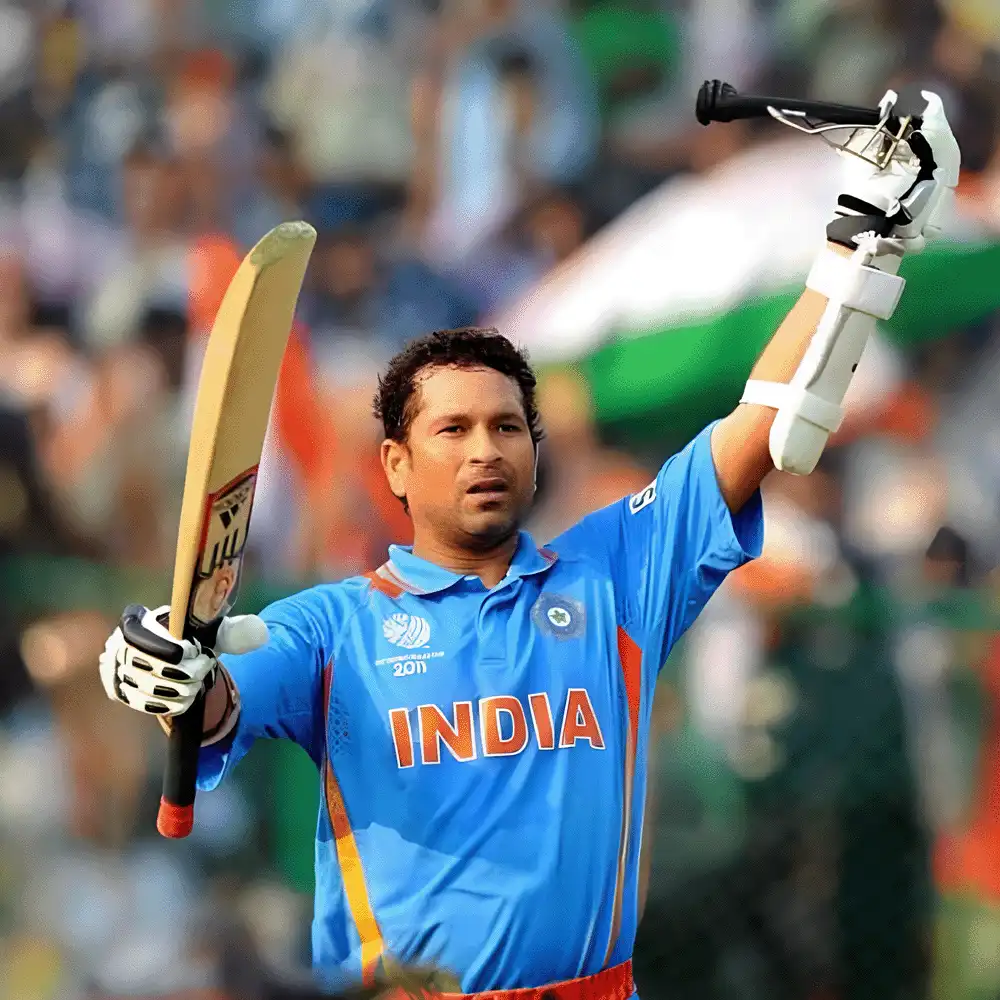

5 Longest Cricketing careers
Some players have etched their names into history through their exceptional longevity in cricket. These cricketers with the longest careers have defied age and time, showcasing their unwavering dedication and passion for the game. Their journey stands as a testament to their enduring love for cricket and serves as an inspiration for aspiring athletes worldwide.
1. Wilfred Rhodes (30 Years, 315 days)
Wilfred Rhodes was born on October 29, 1877, in Kirkheaton, Yorkshire, England. He was an English cricketer who played during the late 19th and early 20th centuries, regarded as one of the greatest all-rounders in the history of cricket. Rhodes was known for his left-arm spin bowling and solid batting skills. Rhodes made his first-class debut for Yorkshire in 1898, enjoying a career that spanned over 30 years until his retirement in 1930, becoming the longest-serving cricketer in Cricket history.
Rhodes was highly successful and versatile, with the ability to extract spin and movement from the pitch. During his first-class career, Rhodes claimed 4204 wickets, remaining the highest wicket-taker in first-class cricket history. In addition to his bowling skills, Rhodes was also a capable batsman known for his gritty and determined approach. He often rescued his team from challenging situations with crucial runs.
He scored over 39000 runs in first-class cricket, becoming one of the highest run-scorers in the history of cricket. Rhodes was a key figure in English cricket during the early 20th century, representing England in 58 Test matches between 1899 and 1930. In Test cricket, he scored over 2000 runs and 127 wickets.
Post-retirement
After his playing career, Wilfred Rhodes served as a coach and mentor to several generations of cricketers, playing a pivotal role in nurturing young talents. Due to his immense contributions to the game, Rhodes was named a Wisden Cricketer of the Year in 1900. He had received several accolades and honors for his services to cricket. Rhodes’ journey from 1898 to 1930 stands as a testament to his passion, dedication, and love for cricket.
His longevity and exceptional performances have inspired countless cricketers, reminding them of the enduring spirit of the game. Wilfred Rhodes remains an iconic figure in cricketing history, etched forever in the hearts of cricket enthusiasts worldwide.
2. Dennis Brian Close (26 years, 356 days)
Dennis Brian Close, known as Brian Close, was born on February 24, 1931, in Yorkshire, England, to a working-class family. He was the second eldest of five boys and a girl, living in several small council houses. He was an English cricketer known for his tenacity, strong character and fierce competitive spirit. He was an all-rounder, contributing as a right-handed batsman and a right-arm off-spin bowler.
Growing up, Close practiced cricket with his father, a keen cricketer that kept wicket and was a big hitter in the Bradford Cricket League. In February 1949, Close underwent a medical examination with the British Army, but his call-up was delayed due to an injury from playing football. This allowed him to continue pre-season training with Yorkshire before he was given a trial for the country due to his performance.
Close made his first-class debut for Yorkshire in 1949, at age 18. His Test debut followed a year later in 1950. He was known for his exemplary leadership, captaining both Yorkshire and England during the span of his career. He captained England in 7 Test matches between 1966 and 1967 with a no-nonsense approach.
In 1967, Close was at the center of a controversial incident during a Test match against the West Indies. While facing Charlie Griffith’s bowling, he was struck by a bouncer near the heart while evading a head injury at 90mph. Despite the severe injury, Close continued to bat after receiving medical injuries.
Close’s international career spanned 22 Test matches, scoring 887 runs and taking 18 wickets. In First-class cricket, he scored over 34000 runs and took 800 wickets. He was known as a cricketing gambler, prepared to take risks and court controversy throughout his career.
During the 1977 season, Close retired from county cricket and achieved folk hero status in Somerset. After retiring from Somerset, Close played at the Scarborough Festival against international teams. At age 55,
Post-retirement
After an incredibly long cricket career, representing Yorkshire for 27 years, Close retired in 1977 at age 46. Even in his seventies, Close continued his involvement in Yorkshire, coaching and mentoring young talents to share his knowledge and experience.
He passed away in 2015, marking the end of an era in English cricket. His impact remains, and he is remembered as a fearless cricketer and inspiring leader.

3. Frank Woolley (25 Years 13 Days)
Frank Woolley was born on May 27, 1887, in Kent, England, and is known as one of the finest all-rounders in the history of cricket. He was the youngest of four brothers, living close to the Angel Ground, home to Tonbridge Cricket Club.
His cricketing journey began at an early age, making his first-class debut for Kent in 1906 at age 19. He established himself as a talented left-handed batsman and a slow left-arm orthodox spinner. As a batsman, Wooley was known for his stylish and fluent strokeplay, with an ability to play defensive and attacking shots.
His first-class career spanned 25 years, during which he achieved over 58,000 runs and claimed more than 2,000 wickets. Playing primarily for Kent, he showcased unwavering dedication to the sport, becoming one of the longest-serving cricketers of his time.
Woolley’s remarkable performances caught the attention of the national selectors, leading to his representation of England in 64 Test matches between 1909 and 1934. He proved a vital asset to the English team during the Ashes series and various Test matches, contributing significantly with both bat and ball.
One of Woolley’s most memorable moments came in the fifth Test of the 1912 Ashes series against Australia. In that match, he showcased his extraordinary all-round abilities by scoring a remarkable century and taking a five-wicket haul, leading England to triumph.
Despite his advancing age, Woolley’s passion for cricket remained undiminished. He continued playing for Kent until his retirement in 1938 at the remarkable age of 51.
Post-retirement
After his playing days, Woolley stayed connected to the game as a coach and mentor. He shared his knowledge and expertise with aspiring cricketers, leaving a lasting impact on the sport he loved dearly.
4. George Headly (24 years, 10 days)
George Headley was born on May 30, 1909, in Panama, before moving to Jamaica at age 10. He expressed an early interest and talent in cricket, which eventually led to his introduction to the Kingston Cricket Club. Headley joined the Kingston Cricket Club as a young boy, where he showcased his talent and dedication to the sport.
The club recognized his potential and nurtured him. His remarkable performances for Kingston Cricket Club caught selectors’ attention, and he made his Test debut for the West Indies against England in 1930. Aged only 21, he showed immense promise with a century on debut, making him the youngest cricketer to achieve such a feat. Headley earned the nickname “Black Bradman” during his career due to his exceptional batting prowess.
His elegant stroke play and impeccable technique made him a batting sensation. He had the remarkable ability to perform consistently against the best bowling attacks of his era. Headley’s best years were between 1930 and 1939 when he churned out remarkable performances for the West Indies. He became the backbone of the team’s batting lineup, amassing runs with astonishing consistency.
His series against England in 1935 is particularly memorable, where he scored a staggering 703 runs in five Test matches. Despite his talent, Headley faced challenges due to the racial prejudices of the time. He encountered instances during his travels to countries where segregation was prevalent. However, his performances spoke volumes, and he gained respect and admiration from fans and fellow cricketers alike.
Post-retirement
Headley retired from international cricket in 1954, representing the West Indies in 22 Test matches. He ended his career with an impressive batting average of 60.83, cementing his status as one of the all-time greats in cricket history. After retiring, he continued to be involved in the game, coaching and mentoring young cricketers in the West Indies.
5. Sachin Tendulkar (24 Years, 1 Day)
Sachin Tendulkar was born on April 24, 1973, in Mumbai, India, often called the “God of Cricket.” Tendulkar’s journey with cricket began at the tender age of 11. His coach, Ramakant Achrekar, recognized his talent and played a pivotal role in honing his skills, laying the foundation for a historic career ahead. At the age of 16, he made his international debut for India against Pakistan in 1989.
Despite his young age, he exhibited remarkable composure and technique. Throughout his illustrious career, Tendulkar shattered numerous records, cementing his status as one of the greatest batsmen in cricket history. He became the first player to score 100 international centuries, including 51 Test centuries and 49 One-Day International (ODI) centuries.
Tendulkar’s heroics during the 1998 Coca-Cola Cup in Sharjah, known as the “Desert Storm,” became legend. His back-to-back centuries against Australia under challenging conditions led India to victory, etched his name in cricketing folklore. Tendulkar’s career peaked in 2011 when he won the ICC Cricket World Cup. Playing a crucial role in India’s triumph, his consistent performances were instrumental in guiding the team to glory.
Tendulkar’s accomplishments earned him admiration not only from cricket enthusiasts but also from the entire nation. In 1999, he received the prestigious Padma Shri, one of India’s highest civilian awards. Additionally, he was the first sportsperson to be awarded the Bharat Ratna, the country’s highest civilian honor, in 2014.
Post-Retirement
In November 2013, Tendulkar bid an emotional farewell to international cricket in his hometown, Mumbai. The cricketing world came together to pay tribute to him as he walked off the field for the last time, leaving behind an unmatched legacy. Tendulkar’s contributions extend beyond cricket. He actively engages in various philanthropic endeavors, supporting causes related to children’s education, healthcare, and social welfare. His dedication to giving back to society earned him even more admiration and respect.

Latest News
Top 3 Players with Most ODI series played
Erling Haaland Named PFA Player of the Year
Litton Das To Miss First Match in Asia Cup
UEFA Club Rankings
Players Are Excited for PKL10, Says Chhillar
– Advertisement –
– Advertisement –
– Advertisement –
– Advertisement –
– Advertisement –